Pavilion Publishing and Media Ltd
Blue Sky Offices Shoreham, 25 Cecil Pashley Way, Shoreham-by-Sea, West Sussex, BN43 5FF, UNITED KINGDOM
Advance reports: PREVAIL study – new results
This article reviews the latest news and reports on medical advances, including the PREVAIL study, HPS2-THRIVE trial, the PARTNER II trial and the STREAM trial.
This article reviews the latest news and reports on medical advances, including the PREVAIL study, HPS2-THRIVE trial, the PARTNER II trial and the STREAM trial.
PREVAIL study: new results
Results from the PREVAIL (Prospective Randomized EVAluation of the WATCHMAN LAA Closure Device In Patients with Atrial Fibrillation Versus Long Term Warfarin Therapy) study found that despite implantation in higher risk patients the Watchman device can be safely implanted by new operators. Two of three primary endpoints were met even in the presence of an over performing control group.
PREVAIL is a prospective, randomised, multicentre study to provide additional information on the safety and efficacy of the Watchman LAA Closure Technology. It was also a confirmatory study conducted to provide additional information on the implant procedure and complication rates associated with the device. It included 407 randomised patients from 41 US centres.
The Watchman device is an alternative to oral anticoagulation therapy for thromboembolic prevention in patients with non valvular atrial fibrillation. Watchman is a self-expanding nitinol frame with fixation anchors and a permeable fabric cover. It is designed to be permanently implanted at or slightly distal to the opening of the left atrial appendage to trap potential emboli before they exit the LAA. It is implanted via a transseptal approach by use of a catheter-based delivery system.
People with AF have five times the risk of stroke compared to people without AF. Stroke is more severe for patients with AF, as they have a 70% chance of death or permanent disability.
Compared with non-AF patients, AF patients have poorer survival and more recurrences of stroke during the first year of follow-up. The economic burden of stroke will continue to rise globally as the incidence of stroke increases.
The first primary endpoint was acute (seven-day) occurrence of death, ischaemic stroke, systemic embolism and procedure or device related complications requiring major cardiovascular or endovascular intervention. The PREVAIL trial showed improved procedural implant success p=0.04; decreased composite vascular complications p=0.004; decreased procedural stroke rates p=0.019; decreased perforations requiring surgical repair p=0.027 and little difference in outcome of new versus experienced operators.
The second endpoint was comparison of composite of stroke, systemic embolism, and cardiovascular/unexplained death. The control group had lower than expected event rates (over performing). There was similar low event rates in both groups and a limited number of patients with follow-up through 18 months thus far (control = 30 patients, device = 58 patients). Although event rates were similar, pre-specified non-inferiority criterion was not met (exceeded the upper 95% CI bound).
The third endpoint was comparison of ischaemic stroke or systemic embolism occurring >seven days post randomisation. Pre-specified non-inferiority criterion were met (95% CI Upper Bound < 0.0275%).
HPS2-THRIVE trial: disappointing results
Results from the Heart Protection Study 2-Treatment of HDL to Reduce the Incidence of Vascular Events (HPS2-THRIVE), announced at the ACC, found that it did not meet the primary endpoint of reducing the chances of a major vascular event, defined as the composite of non-fatal heart attack or heart-related death, stroke, or need for angioplasty or bypass surgery.
HPS2-THRIVE is the largest-ever study of niacin, commonly used to raise high-density lipoprotein (HDL) or ‘good’ cholesterol and lower low-density lipoprotein (LDL) or ‘bad’ cholesterol.
The four-year study tested a combination of extended-release (ER) niacin with laropiprant in patients at risk for cardiovascular problems such as heart disease and stroke. 25,673 patients in the study were randomised to receive ER niacin/laropiprant 2g/40mg or a placebo, and all received commonly prescribed LDL cholesterol-lowering medication simvastatin (with or without ezetimibe).
The study patients receiving ER niacin/laropiprant had a similar number of major vascular events as patients receiving placebo (13.2 versus 13.7%, p=0.29).
The study also found unexpected and significant excesses of bleeding (2.5 versus 1.9%) and infections (8.0 versus 6.6%) among the ER niacin/laropiprant patients. In addition, significantly higher numbers of patients receiving the study drug suffered serious known side effects including new onset diabetes (9.1 versus 7.3%), diabetic complications (11.1 versus 7.5%), gastrointestinal problems such as indigestion and diarrhea (4.8 versus 3.8%), and skin issues including itching and rashes (0.7 versus 0.4%).
Jane Armitage, Professor at the University of Oxford and the lead author of the HPS2-THRIVE study, said: “We are disappointed that these results did not show benefits for our patients. Still, finding out a drug is not helping people is just as important as finding that it has benefits – the net result is that people are healthier. Niacin has been used for many years in the belief that it would help patients and prevent heart attacks and stroke, but we now know that its adverse side effects outweigh the benefits when used with current treatments.”
A high level of LDL cholesterol is a known risk factor for heart disease and stroke. Standard treatment for at-risk patients includes dietary and lifestyle changes, as well as commonly prescribed medications such as statins, cholesterol absorption inhibitors and resins. Still, heart disease and stroke continue to cause death and disability even in patients receiving these medications, and there was hope that the addition of niacin to standard therapy would improve patient outcomes.
STREAM trial: fibrinolysis with tenecteplase
A clot-busting therapy may benefit some heart attack patients who cannot have immediate angioplasty, according to research presented at the ACC.
The Strategic Reperfusion Early After Myocardial Infarction (STREAM) trial included 1,915 patients from 15 countries. All had ST-elevation myocardial infarction (STEMI), a type of heart attack caused by a blood clot completely blocking one of the heart’s arteries. Patients were first seen in community hospitals or by emergency medical personnel. In these settings, immediate angioplasty – the preferred first-line treatment for STEMI – was not possible until patients were transferred to a major medical centre.
Before transfer, subjects were randomised to either angioplasty – also called PCI, or percutaneous coronary intervention – immediately after arrival or to drug therapy with tenecteplase plus enoxaparine, clopidogrel and aspirin before arrival.
When patients on tenecteplase reached a medical centre, about one-third needed urgent angioplasty. The other two-thirds did not. They received an angiogram an average of 17 hours after arrival. Based on the results of the angiogram, patients received either PCI or coronary artery bypass graft surgery under non-urgent circumstances.
Frans Van de Werf, MD, PhD, Professor of Cardiology at University of Leuven, Belgium, and the study’s lead investigator, said: “The results provide the opportunity for a measured approach to invasive coronary interventions, circumventing an urgent procedure in about two-thirds of fibrinolytic-treated STEMI patients. Drug therapy before transfer is at least as effective as [angioplasty], and an urgent catheterization was avoided in two-thirds of patients. It gives [clinicians] time to consider other options, such as [coronary artery bypass graft] and medical therapy.”
The primary endpoint was a composite of all-cause mortality, shock, congestive heart failure and subsequent heart attack within 30 days. Results were similar between the immediate PCI group and the tenecteplase group (14.3 versus 12.4%, p=0.211). There were no differences in cardiac-specific mortality or cardiac rehospitalisation.
Patients receiving tenecteplase were more likely to have normal blood flow on an angiogram, compared with the PCI-only group (58 versus 21%). They were less likely than the PCI-only group to have an angiogram show complete blockage of an artery (16 versus 59%). More tenecteplase patients than PCI-only patients eventually underwent coronary artery bypass graft surgery.
During the course of the trial, researchers halved the dose of tenecteplase in people aged 75 and older to minimize cranial bleeding, a common complication of clot-busting therapy. The incidence of such bleeding in the total study population was 0.5% after the dose reduction.
The study was also published online in the New England Journal of Medicine.
PARTNER II: better short term outcomes
The new Sapien XT aortic valve showed a non-significantly lower rate of death and strokes at 30 days than the original model, and both valves demonstrated notably better short-term outcomes than seen with the Sapien system in PARTNER I, according to the first results from the PARTNER II study presented recently at the ACC.
PARTNER II is the first randomised clinical trial involving the Sapien XT valve and the only one that compares the new device to the original FDA-approved Sapien design. The redesigned Sapien XT has been commercially available for some time in most other parts of the world except the United States.
Three years ago the first PARTNER trial reported an almost doubled risk of stroke at 30 days for patients in the Sapien transcatheter system group compared with those who had standard open-heart surgery. After that period, the stroke risk leveled off for both groups. The new valve is part of a three-component system – a metal stent frame, a valve leaflet and a catheter – and each piece has been materially changed to make the device smaller and thinner. The frame, formerly stainless steel, is now a thinner cobalt chromium alloy and uses less metal overall, allowing the device to be compressed tighter.
The composite one-year endpoint is all-cause mortality, disabling stroke and repeated hospitalisation for problems related to aortic stenosis.
Martin B. Leon, MD, Professor of Medicine and Director of the Center for Interventional Vascular Therapy, Columbia University Medical Center, New York, and co-principal investigator of the PARTNER studies, said: “With the new device, we can treat patients who have smaller vessels with less injury and less trauma, and the valve positioning is more precise. Any time you get below 20 French in catheter size, that’s significant for
patient safety.”
PARTNER II’s Cohort B compares the original and new Sapien systems in 560 patients with severe aortic stenosis who were very old, with a mean age more than 84 years, and very sick. More than 96% were classified with NYHA Class III (moderate) or Class IV (severe) heart failure, and 59% were assessed as clinically frail. All patients were deemed unsuitable for standard open-heart surgery.
This non-inferiority study was designed to show that the new Sapien XT is at least as safe and effective as the old device. At 30 days, all-cause deaths were 3.5% for Sapien XT and 5.1% for the original device.
“These are the lowest 30-day mortality results for transcatheter aortic valve replacement in any study using rigorous clinical trial methodology,” Dr. Leon said. “For these inoperable patients, the sickest of the sick, they’re surprisingly good.”
Stroke rates at 30 days also were low in both groups, at 3.2% for Sapien XT and 3% for Sapien, and much lower than in PARTNER I.
With the new device, the total procedural time was shorter, the frequency of vascular complications was lower and there were far fewer vascular perforations. In the Sapien group, 10 patients required a second valve because of malfunction or mispositioning, compared with only three patients in the Sapien XT group.
The study’s Cohort A will compare the new Sapien XT with open-heart surgery in intermediate-risk rather than high-risk patients.



